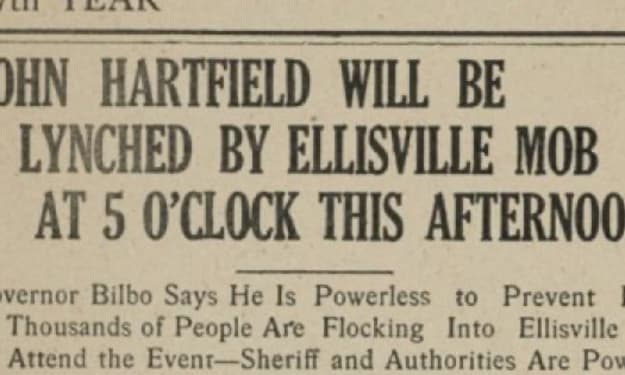White Privilege and Jim Crow
United States History Untold

White Privilege and Jim Crow.
Black history is United States history; likewise, some United States history is Black history. The only way to understand racism in the United States is to first understand our history – the complete history. Race and White privilege has always been the major issue in U.S. politics.
It is rumored, through the 1830s and 1840s, Thomas D. Rice performed a song and dance act he claimed was modeled after a slave. He named that character Jim Crow. The best known name for United States apartheid is Jim Crow – laws, customs and etiquette that segregated and demeaned Black Americans from the 1870s to the 1960s.
After the Civil War, Southern and Border States passed laws that denied Blacks basic human rights. These laws, Jim Crow laws, were intended to restrict social contact between Whites and other groups (primarily Blacks) and to limit the freedom and opportunity of people of color. Jim Crow laws regulated and condemned to 2nd class citizenship, Black citizens. Hospitals, public and private schools, churches, cemeteries, public accommodations, parks, theaters, restaurants and even vacant lots kids may play on, had laws that separated the races.

These government sanctioned laws ensured there were separate hospitals for Blacks and Whites, separate public and private schools, separate churches, separate cemeteries, separate public restrooms and separate public accommodations Most of the time, the Black facilities were grossly inferior, older, smaller and less well-kept and inconveniently located. In other cases there were not Black facilities, playgrounds, hospitals, libraries, public beaches and no place to sit and eat. There were no hotels Blacks could use when they traveled – Blacks needed to use boarding houses instead and this need created the need for the Green Book, a guide to safe travel for Black citizens across the nation.
Jim Crow laws made it legal for White citizens to treat Black (and other minority) citizens differently. It made it legal to refuse service based on race. It made it legal to refuse to allow minorities to enter front doors of businesses. It was legal to prohibit children of differing races to play together. It made it illegal for non-Whites to live in certain areas. It made it legal to provide different sentences for Black and White criminals.
As Blacks fought the unjust Jim Crow laws, many battles were lost, few were ever won. Separate public schools were often created for Asian, Latino and Native American children. When there were not enough children of a single racial group to form their own school, they were usually required to attend Black schools. In some southern states, White schools received 2 to 3 times more money per student than Black schools. Black taxpayers in several states not only paid the entire cost of their own schools, but helped support White schools as well.

School administrators often took a hand me down approach to Black schools. Outdated textbooks from White schools would be transferred to Black schools.
Even for something as simple as a water fountain, the law (government sanctioned law), made it illegal to drink from the same fountain. Supporters stated “shared public facilities – in this case, water fountains – would promote social equality, which would, in turn, lead to the destruction of American culture.”
The point of the Jim Crow laws was to have an entire nation look at one group (Blacks) differently and treat them differently (by law) than White citizens. By government sanction, citizens were ordered to view Blacks as 2nd class citizens and treat them accordingly.
In South Carolina, Black and White textile workers could not work in the same room, enter through the same door, or look out the same window. Many industries wouldn’t hire Blacks and many unions passed rules to exclude them. More than 360,000 Black men served in World War I. They were welcomed home with 25 major race riots. White mobs lynched veterans in uniform; Black Americans fought back. A Swede visiting the south in 1944 pronounced “segregation is so complete that Whites did not see Blacks except when being served by them.”

We as a nation must ask ourselves, how can a people have full citizenship when the laws of their nation deny them full rights as citizens? We must realize thatt just because a government changes its “mind” of how it will treat a people does not mean the citizenry will be able to adapt. Generations of citizens have been taught by the government that Blacks are inferior. How does the government convince them it (the government) was wrong and its laws were unjust?
It may be difficult to see, but many of the problems we are seeing between the police and Blacks are due to leftover sentiment from the Jim Crow laws. These laws have been so deeply imbedded in our society that some people still have a problem letting go of the old Jim Crow laws. No, they are not sending Blacks to the back of the bus or making them drink out of a different water fountain, but White society still doesn't treat Blacks as citizens with full rights. The police continue to police the Black community as it did during Jim Crow and slavery – and the race of the cop doesn’t matter, from slavery, to Jim Crow, to the Civil Rights Movement to present day, the abuse is still being felt.
About the Creator
Glenda Davis
The purpose of this blog will be to discuss race relations, learn history and hopefully help us all to be more patient, understanding, emphatic.
I am a 59 year old Black woman, a veteran Sargent of the United States Air Force and a retiree.






Comments
There are no comments for this story
Be the first to respond and start the conversation.